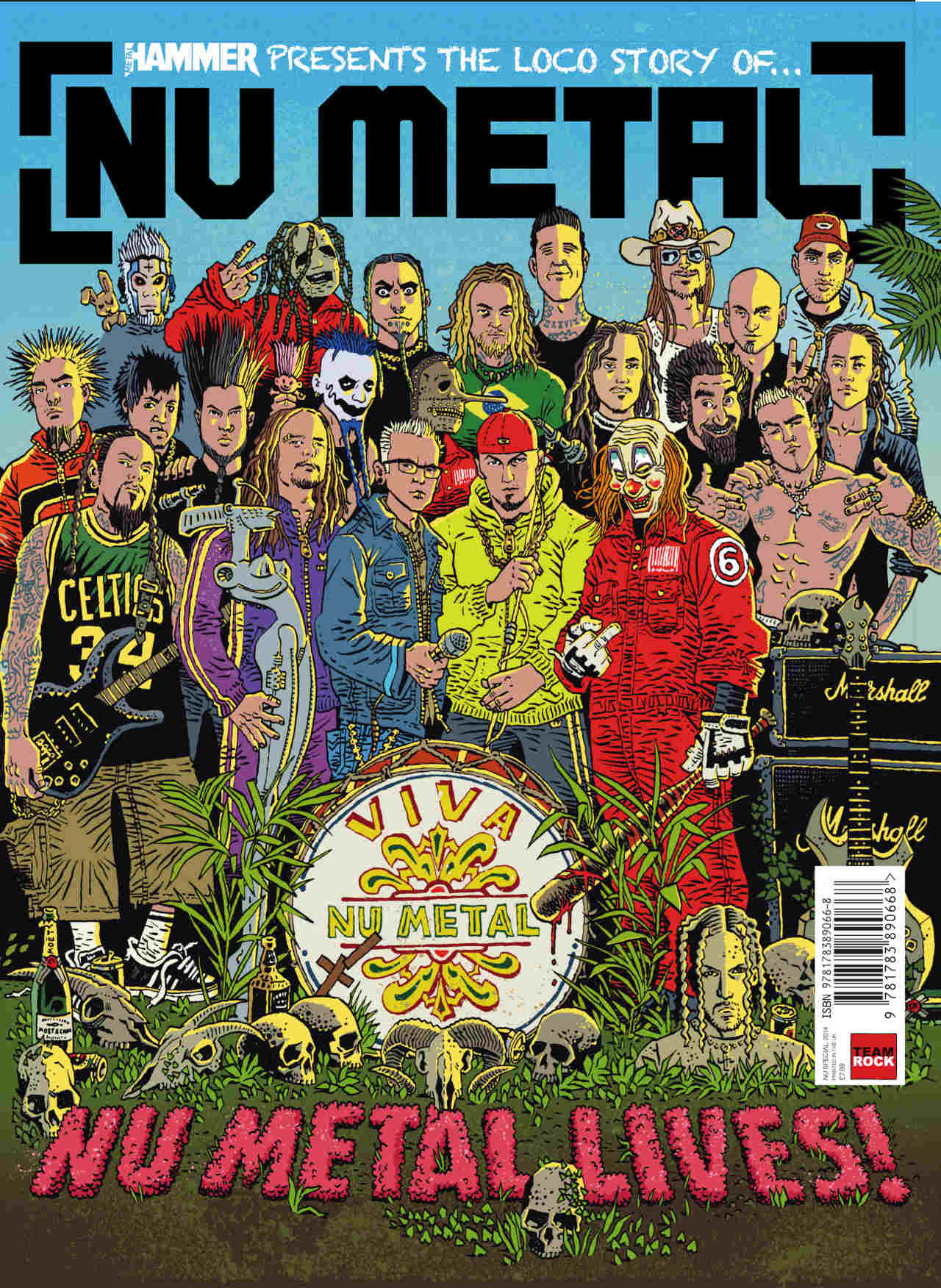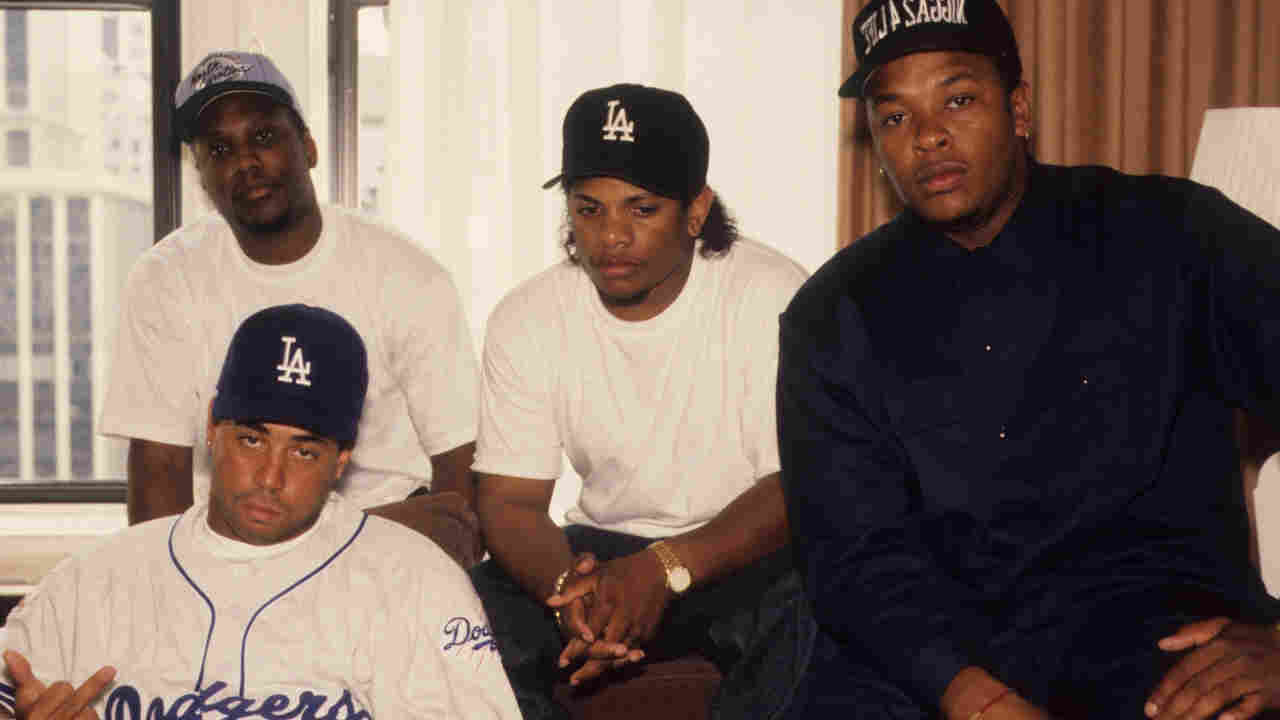On Saturday August 22, 1987, 75,000 metalheads undertook a pilgrimage to Donington Park for the eighth staging of the annual Monsters Of Rock competition.
The day was notable for a number of causes. The invoice – Bon Jovi, Dio, Metallica, Anthrax, WASP and Cinderella – was the one all-American lineup within the occasion’s historical past. The organisers misspelled the competition website as ‘Donnington’ on the stage banners. And Iron Maiden’s Bruce Dickinson gave a none-too-subtle clue as to the identification of the next 12 months’s headline attraction when, on the climax of his visitor spot with Bon Jovi, he instructed the rain-sodden crowd, “See you subsequent 12 months.”
Amid the denim, leather-based and spandex-clad hordes gathered within the East Midlands that weekend, one man’s sartorial style drew a lot remark. In selecting to put on a Public Enemy T-shirt onstage, Anthrax guitarist Scott Ian may hardly have stood out extra had he appeared earlier than the Donington devoted in a tutu.
Whereas Slayer guitarist Kerry King’s cameo on the Beastie Boys’ No Sleep Until Brooklyn and Aerosmith’s collaboration with Run-DMC on Stroll This Means had completed a lot to interrupt down boundaries between the worlds of hip hop and metallic, Ian’s public endorsement of the Lengthy Island rap crew was controversial. In contrast to the cartoon menace of the bratty Beasties and their Adidas-wearing brethren from Hollis, Queens, Public Enemy had been seen as radical, subversive and genuinely revolutionary.
Many media commentators checked out Public Enemy’s emblem – a silhouette of a black man framed in a sniper’s crosshairs – their (faux) Uzi-wielding S1W posse and their uncompromising, militant lyrics preaching resistance and riot and wrongly concluded that Chuck D’s prophets of rage had arrived to soundtrack a race struggle. What was a pleasant Jewish boy like Scott Rosenfeld doing pledging allegiance to such a bunch?

In reality, whilst metallic followers within the UK had been largely preoccupied with their very own Thrashers vs Poseurs civil struggle, hip hop was already profitable hearts and minds within the continent to the left. Public Enemy and their West Coast compatriots NWA and Ice-T weren’t singing about avenging Satanic goblins or the upcoming menace of nuclear Armageddon.
As a substitute, their songs laid naked the tough realities of life on the streets of inner-city Amerikkka in graphic, unflinching element. That middle-class suburban white children from Lengthy Seaside to Lengthy Island would by no means expertise racial profiling, police brutality or drive-by shootings was largely irrelevant: hip hop sounded explosive, appeared harmful and felt actual.
The brand new technology of hip hop artists got a visible identification by LA photographer Glenn E. Friedman. Having begun his profession photographing ‘Dogtown’ skate boarders and the primary wave of Southern Californian hardcore bands, Friedman was instinctively drawn in the direction of rebels with a trigger (his first hardcover photograph ebook was titled Fuck You Heroes), and in hip hop’s new breed he noticed the identical fearlessness, targeted vitality and punk-rock perspective that impressed the skater and hardcore communities. His iconic portraits of Def Jam’s rising artists had been daring, stark and ‘heavy’ in ways in which completely eclipsed the posturing machismo of the metallic acts of the day. Quickly sufficient, their distinctive stylings – Adidas tracksuits, baseball caps and basketball sneakers – had been de rigueur for angst-ridden adolescents looking for to make rebellious statements of their very own.

Whilst Friedman’s images delineated the frequent floor between skate, punk rock and hip hop tradition, a brand new band emerged to make the synthesis full. Rage In opposition to The Machine mixed the adrenalized rush of skating, the kinetic ferocity of punk rock, the brooding menace of hip hop and the brutish energy of 70s onerous rock in a single inflammatory bundle.
Articulate, intense and confrontational, the multi-racial LA collective’s thrillingly apoplectic guerrilla manifestos owed as a lot to Public Enemy as The Conflict, Dangerous Brains and Led Zeppelin, and frontman Zack de la Rocha’s outsized, dishevelled streetwear enabled him to imbue their incendiary performances with an exhilarating physicality as fluent as his livid, flowing rhymes. Right here, really, was the sound of liberation and a blueprint for the long run.
No sooner had Rage’s self-titled debut album hit the streets than their file label start corralling onerous rock and hip hop artists collectively to file collaborations for the soundtrack to the 1993 motion thriller Judgment Evening. Reviewing the ensuing 11-track album, Rolling Stone journal commented: “Judgment Evening’s bracing rap rock is like the marriage of hillbilly and ‘race’ music that began the entire thing within the first place… It’s an aspiring re-birth.”
RATM guitarist Tom Morello famous: “I’m fairly assured that on the identical time, file firm executives in boardrooms throughout the nation had been saying, ‘If solely we are able to discover a Rage In opposition to The Machine that may make 5 movies per file and have songs about chicks and exhibit.’”
They wouldn’t have lengthy to attend.

“When Rage In opposition to The Machine got here out in 1992, that was fucking large for me,” admitted Limp Bizkit frontman Fred Durst. “I got here from this breakdance and hip hop background so to see this band put numerous hip hop into this heavy rock was actually inspiring.”
“Everybody in our circle was listening to numerous West Coast hip hop, and numerous that stuff was actual minor key and darkish anyway,” Korn bassist Fieldy added. “When you may take that to the following stage, you would make it heavy metallic.”
It could have been ludicrous for a bunch of white suburban metalheads to tackle the gangsta posturing of 90s hip hop, however simply as hip hop DJs developed a eager eye for pilfering musical sources from throughout a broad spectrum of a century of recorded music, so a brand new technology of hip hop-loving rockers sampled fragments of rap tradition with unselfconscious glee, placing new twists on already iconic symbols, as with Jonathan Davis’s choice to bling out his Adidas tracksuits with faux fur and metallic sequins, and even conventional metallic bands like Machine Head and Worry Manufacturing facility donning sports activities clobber.
It set the tone for the remainder of the 90s and into the 2000s, the place for the higher a part of a decade, denim and leather-based had been left useless within the filth and heavy metallic clichés gave the impression to be gone ceaselessly. Korn and Limp Bizkit not solely borrowed hip hop’s aesthetics and sonic template, however cannily appropriated its savvy cross-brand advertising and marketing methods too, inviting the likes of Eminem, Dr. Dre, Technique Man and Ice Dice to make cameo appearances each on file and in promotional movies.
At a time when the kings of metallic, Metallica, had been rebelling in opposition to their very own success, fucking with their alpha male picture by embracing metrosexuality, excessive artwork and ‘different’ tradition on Load and Reload, metallic’s nu breed had been drawing upon the vitality, soul and color of city road life to carry the noise in more and more flashy and provocative methods. Instantly, the old-fashioned appeared like previous hat, and nu metallic promised the true sound and elegance of youth music with perspective.
A decade on from Public Enemy infiltrating metallic’s hallowed turf at Donington, a brand new technology had the style’s previous gods of their crosshairs.
Initially revealed in Metallic Hammer Presents The Story Of Nu Metallic, January 2014
